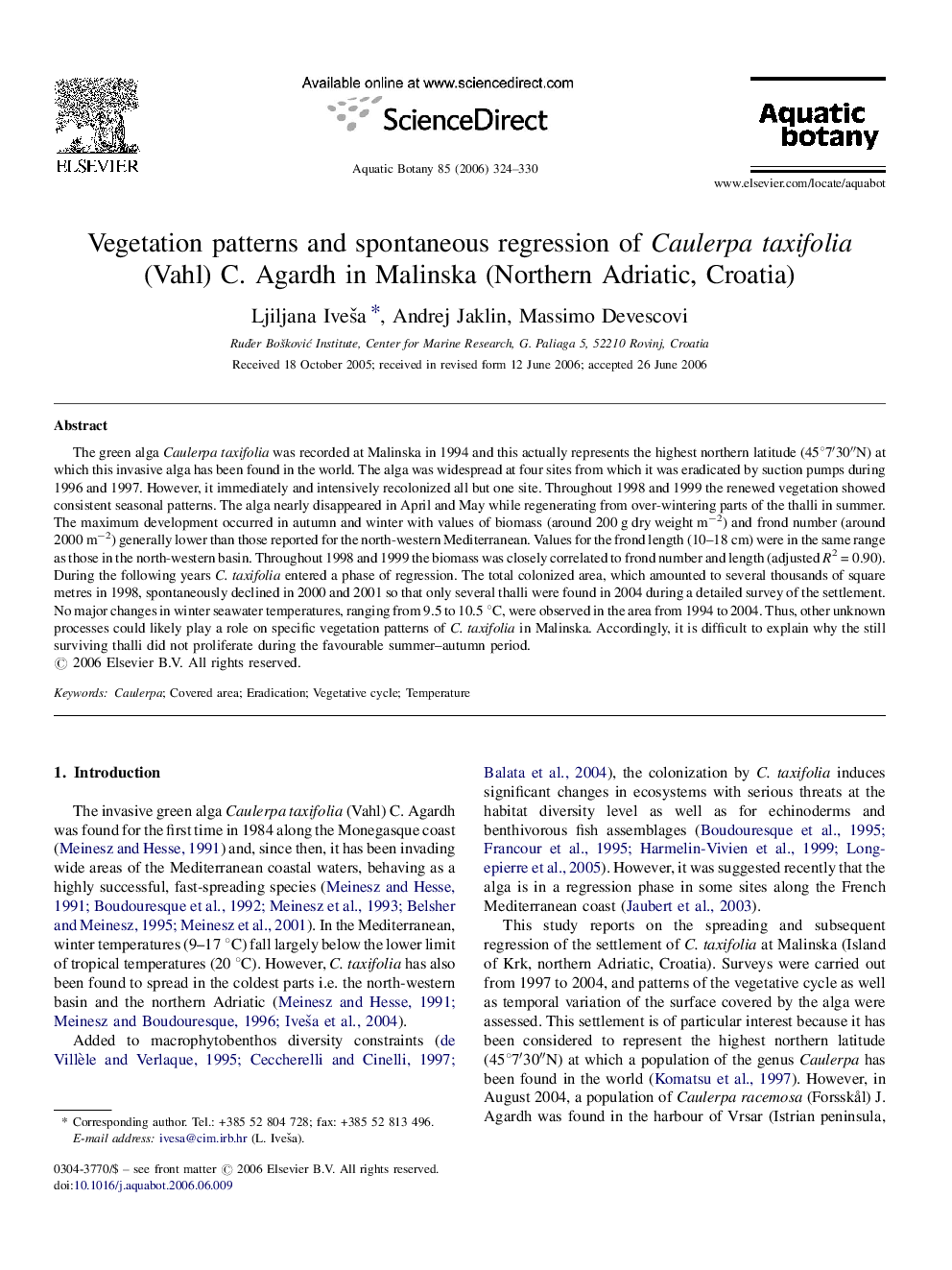| Article ID | Journal | Published Year | Pages | File Type |
|---|---|---|---|---|
| 4528788 | Aquatic Botany | 2006 | 7 Pages |
The green alga Caulerpa taxifolia was recorded at Malinska in 1994 and this actually represents the highest northern latitude (45°7′30″N) at which this invasive alga has been found in the world. The alga was widespread at four sites from which it was eradicated by suction pumps during 1996 and 1997. However, it immediately and intensively recolonized all but one site. Throughout 1998 and 1999 the renewed vegetation showed consistent seasonal patterns. The alga nearly disappeared in April and May while regenerating from over-wintering parts of the thalli in summer. The maximum development occurred in autumn and winter with values of biomass (around 200 g dry weight m−2) and frond number (around 2000 m−2) generally lower than those reported for the north-western Mediterranean. Values for the frond length (10–18 cm) were in the same range as those in the north-western basin. Throughout 1998 and 1999 the biomass was closely correlated to frond number and length (adjusted R2 = 0.90). During the following years C. taxifolia entered a phase of regression. The total colonized area, which amounted to several thousands of square metres in 1998, spontaneously declined in 2000 and 2001 so that only several thalli were found in 2004 during a detailed survey of the settlement. No major changes in winter seawater temperatures, ranging from 9.5 to 10.5 °C, were observed in the area from 1994 to 2004. Thus, other unknown processes could likely play a role on specific vegetation patterns of C. taxifolia in Malinska. Accordingly, it is difficult to explain why the still surviving thalli did not proliferate during the favourable summer–autumn period.
